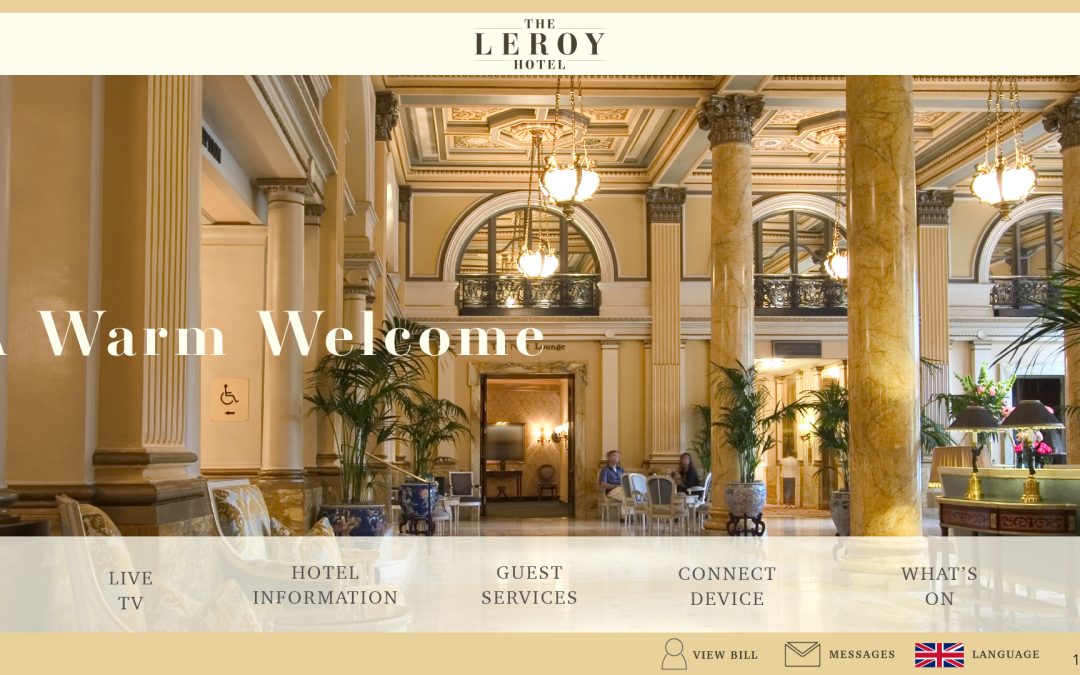
People, today, rarely leave their homes alone. Whether going on vacation or traveling for business, most consumers — regardless of geography — are bringing their digital lifestyles with them. It is a trend that has come into sharp relief in the wake of the COVID-19 crisis, which caused much of the global population to shelter-in-place. In the process, access to entertainment, education and work was largely transferred to their digital platforms.
As business and leisure travel patterns return to some semblance of normalcy, there is nothing normal about what guests now expect from their hospitality providers, when it comes to supporting their digital needs. In the process, guest interactions with video resources offered by hotels have emerged as the key to successful engagement.
We sat down with Richard Neville, Chief Technology Officer at VITEC, to learn more about how next-generation video strategies are shaping the future of the hotel business.
Here is what he had to say:
Q The hospitality sector has gone through quite a bit of change over the past few years as the result of the global pandemic. How has the role of video evolved in the hospitality sector as a result of changing consumer expectations about how they access entertainment experiences?
Richard Neville: There has been quite a significant shift in what travelers around the world expect when it comes to accessing their entertainment services. It has left an indelible mark on what the industry must do in order to meet important new demands. As a result, leaders in the hospitality sector in general — and hotel space in particular — are reevaluating their approach to offering video services as they construct new facilities, or upgrade existing ones.
Video was introduced and utilized within the hospitality sector through set-top boxes that allowed hotels to offer a rich array of on-demand video and access to linear cable channels. It was a strategy that produced a positive — and familiar — experience for guests that largely replicated the access that people were used to at home. In the process, it created an important source of high-margin revenues for hotels, resorts and other key players in the industry.
Over the past few years, however, the picture has changed significantly. The rise of the smart television and Connected TV (CTV) markets is putting pressure on the hospitality sector to reassess the role of video technologies — and other digital services — to improve the guest experience.
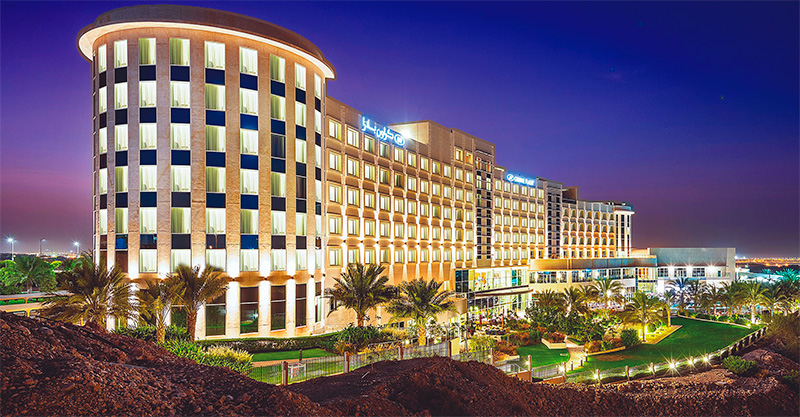
Source: Hospitality & Leisure case study
Crowne Plaza Muscat OCEC selects VITEC in-room entertainment system to provide a premium guest experience.
Today’s consumers are accustomed to watching what they want when they want on whatever device they choose. When traveling, travelers are likely to bring a number of devices — including smart phones, tablets and laptop computers — that they use to access between five and ten different over-the-top (OTT) services. In this respect, no two guests are really alike. While most are likely to subscribe to the biggest streaming services — like Amazon Prime and Netflix — the rest of their lineup varies greatly from guest to guest.
As a result, they are no longer satisfied with hotels offering the equivalent of basic cable. In today’s context, these legacy content offerings are both limiting and cumbersome.
Beyond accessing video services, people now do much more on their smart TVs than just watch content. These devices function more like big screen versions of their mobile devices, that are used by consumers to not only enjoy digital entertainment — including episodic programs, movies and online gaming — but also engage in online shopping and even communicate with their friends.
Consumers have been conditioned to expect an intuitive one-stop shop to their digital resources, making them far less interested in working with old-fashioned remote controls that are cumbersome to use. Guests are far more interested in leveraging the devices they own and services to which they already subscribe to cast the experiences they want onto their in-room large-screen TV.
Q Is there executive recognition of next-generation video strategies as integral to delivering on the brand promise?
Neville: The truth is that, at this point, the response to these trends in consumer desires are all over the map. Some hoteliers view video strategies as essential, and others still spend more on pillows than video systems.
As the attitudes of the traveling public evolve, however, leaders in the hospitality industry are exploring new ways to meet these expectations while designing new channels of engagement that enhance the guest experience and generate new streams of revenues.
Hotels, for instance, have an opportunity to convert their in-room TVs into media hubs that not only provide access to video services, but also serve as the principal vehicle for interacting with their guests in a highly customized manner.
We are seeing that the bigger brands are definitely using next-generation video strategies to differentiate themselves from their competitors by providing customized video experiences for their guests.
It starts with simple things, like offering customized welcome messages when guests enter their rooms, but it can evolve to offering sophisticated services and exclusive offerings for loyalty members. Effective video strategies can enable instant access to digital concierge services — presenting dining and entertainment options available on their properties — which not only enhance and augment services offered by human staff in the lobby, but also drive traffic to the restaurants and other offerings that generate important revenue streams for hotels.
In short, there is growing awareness of the role that video strategies can play in helping hotels provide highly customized guest experiences. This is important because, let’s face it, hotel guests want to feel pampered. They want to feel like special consideration has been taken for them specifically.
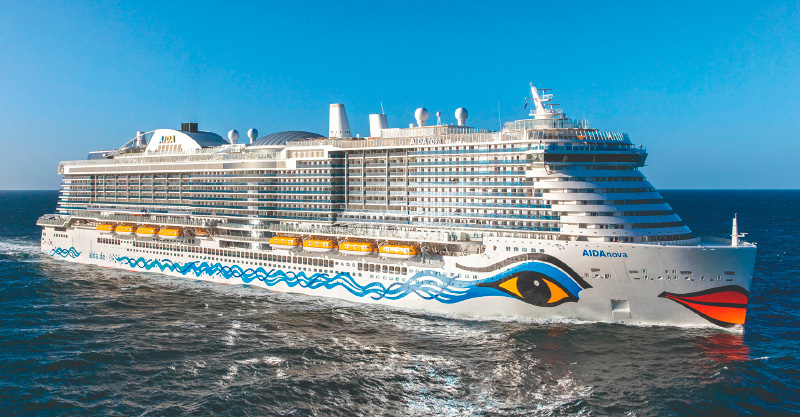
AIDA Cruises selects VITEC to provide premium in-cabin infotainment system
Q Is there a need to invest in the human side of the equation to create and manage great guest experiences through video strategies?
Neville: That’s an excellent question. The answer depends on where the hotel is located and what system it is currently using.
Next-generation video technologies allow the hospitality industry to customize the content and design of their video offerings to guests. Hotel managers can easily change the setup of channels and user interfaces without advanced technological skills.
It is important, however, for hotel leaders and staff to recognize how the boundaries between digital and physical behaviors have blurred for almost all consumers. Most guests have completely integrated devices and digital services completely into their daily lives. One of the consequences of this trend is that a tremendous amount of highly sensitive personal information is generated every day. Much of it is captured by hotel systems — including those that underpin on-prem video services. This makes it vital to protect the security and privacy of the digital aspects of a guests’ stay.
That is why it is so important to ensure that video solutions include user and profile management systems, to control who is privy to the data and services used by guests. This enables hotel managers to lock out or limit employee access to making changes to the system. Easy to manage role-based access controls (RBACs), for instance, can limit receptionist access to certain parts of the system, while allowing centralized help-desks and other service providers within the system to work with the information that is relevant to the tasks that they need to perform.
On the other hand, there are important skills and competencies required for designing and deploying complex systems that are easy for end-users to manage. It is important to have video solutions in place that provide the tools and interfaces that enable staff to manage the main system pretty easily.
Q How important are open standards and systems in supporting hotel video strategies?
Neville: Open standards and open systems are critical to building hotel video strategies that meet current and future demands. While there was a point in the industry’s recent history where video services operated in a siloed environment, today it is vital to ensure integration and interoperability across a wide array of devices and systems.
If hotels treat the in-room TV as a true digital hub that delivers robust and customized services, it is important for the video services environment to be integrated with customer relationship management, maintenance management, reservation management and other enterprise applications that determine the quality of the guest experience and the ability to maximize revenue generated per guest. Open standards and systems provide the foundation for this important level of interoperability.
Open standards and systems also ensure that the variety of devices brought by guests can be seamlessly — and securely — connected to the hotel network.
As new hotels are built — and existing ones are upgraded — hoteliers should look for video solutions that flatten the field in a way that allows them to manage disparity devices and systems that must communicate with each other. This can be done by adhering to industry standards and common user interfaces (UIs) to access and manage the system in a safe, secure and efficient manner.
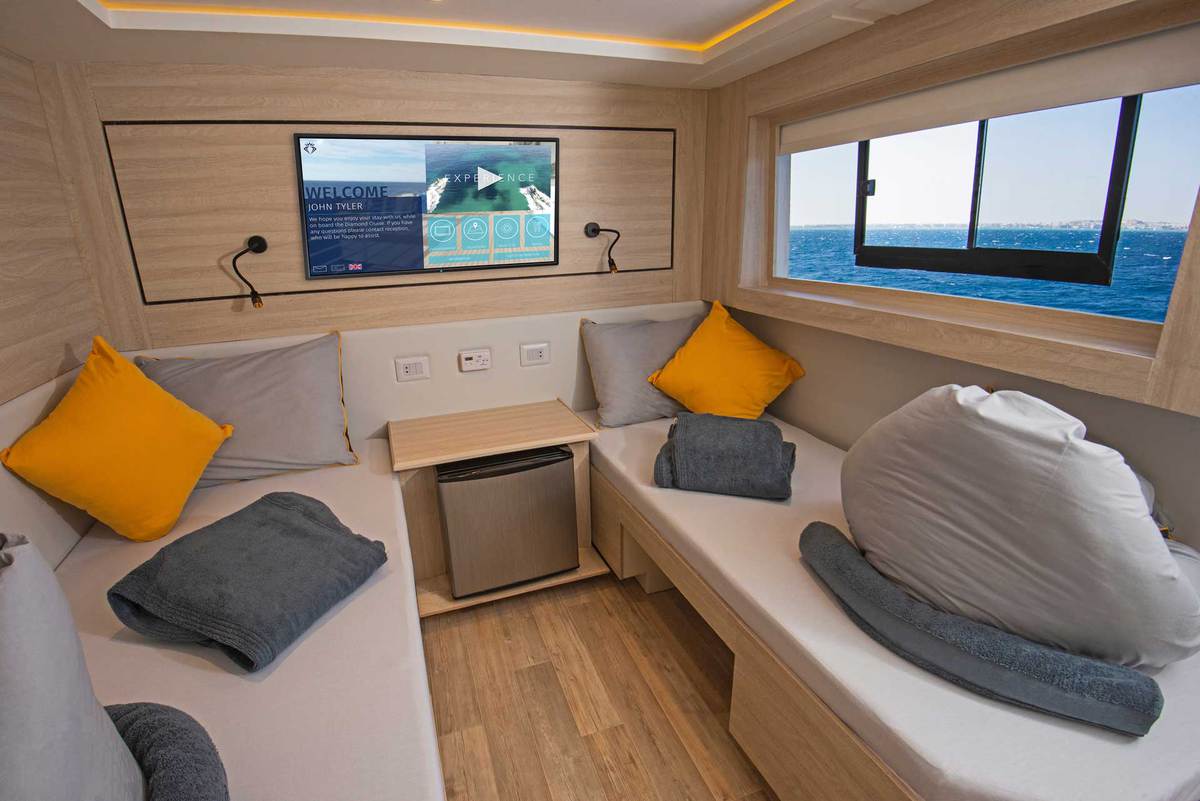
QIt seems that there has been a tremendous amount of innovation deployed by the hospitality industry when it comes to digital signage. Is it important to integrate digital signage and in-room viewing experiences for hotels looking to differentiate themselves from their competitors?
Neville: That’s a very interesting question. The answer is a resounding yes. Digital signage is another category of technology that used to operate in its own silo. Today, it makes no sense to have separate systems to manage these different experiences.
From a technological perspective, displaying content on an in-room television screen or a panel located in a public space is fundamentally identical.
Driving both kinds of content from a common system makes the dynamic management of these experiences much easier. It reduces complexity, provides opportunities for monetization and offers opportunities to reduce risk.
Technology — and standards — have evolved to a point where hoteliers can easily integrate in-room digital messages with signage across other areas of the hotel, such as the lobby, elevators and bars.
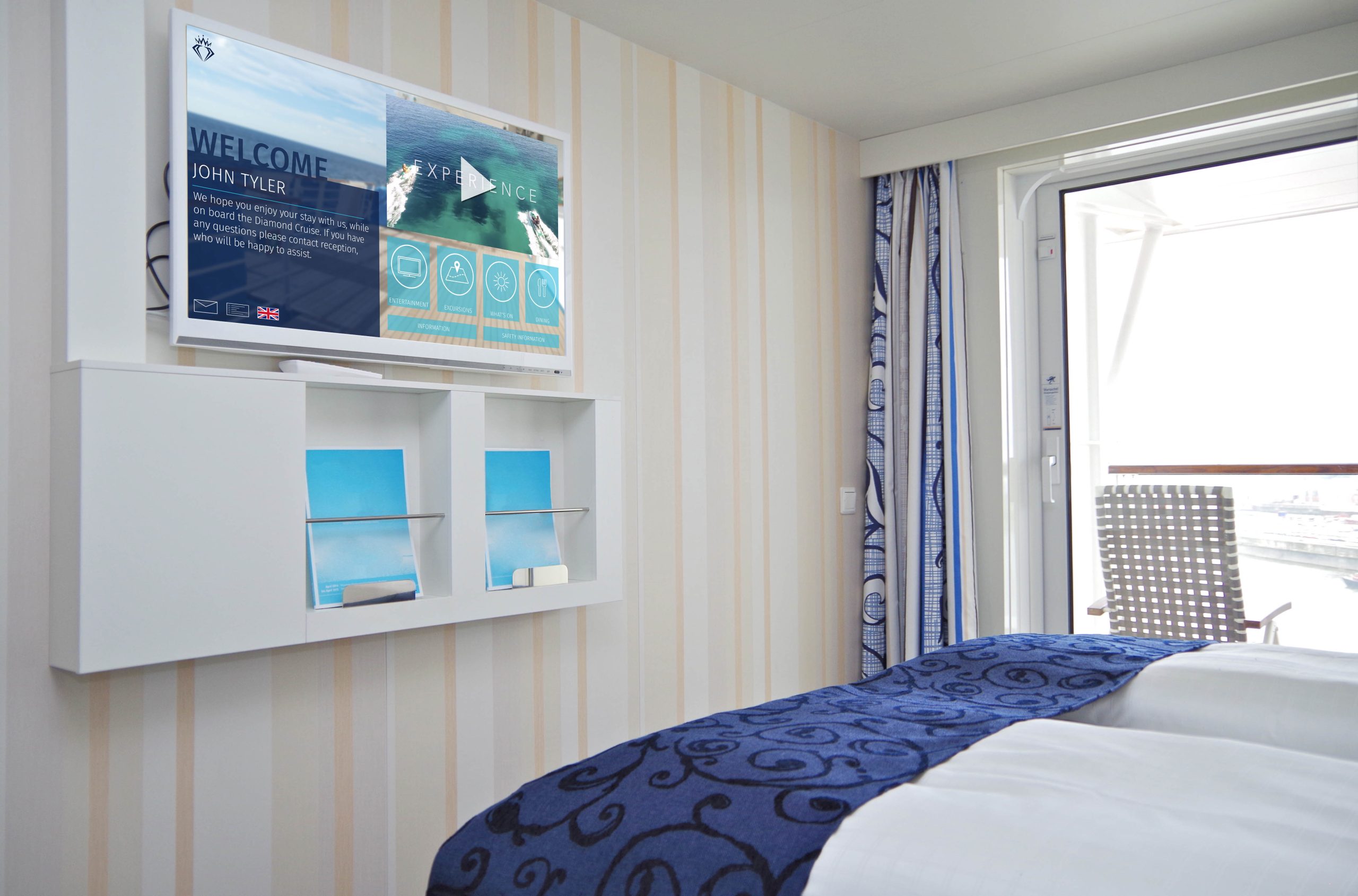
QYou mentioned monetization. What do you mean by that in the context of integrated video strategies?
Neville: Hotels today have the opportunity to execute a number of different strategies with new video technologies that can generate new and incremental revenues.
For example, they can target different messaging to guests based on accumulated points or loyalty levels if they have a loyalty program. They can even create targeted advertising for different hotel floors or blocks of rooms associated with groups — such as conventioneers.
Hotels can now easily change how the interface appears daily if they choose. They can create a quick advertisement for happy hour beverage pricing or notify guests of big sporting events being broadcast in the hotel bar.
The integration of in-room and digital signage can be displayed only in common areas and elevators or across all screens, including selected in-room TV screens. They can even send messages to mobile phones if the hotel has a hospitality phone app available for guests to download.
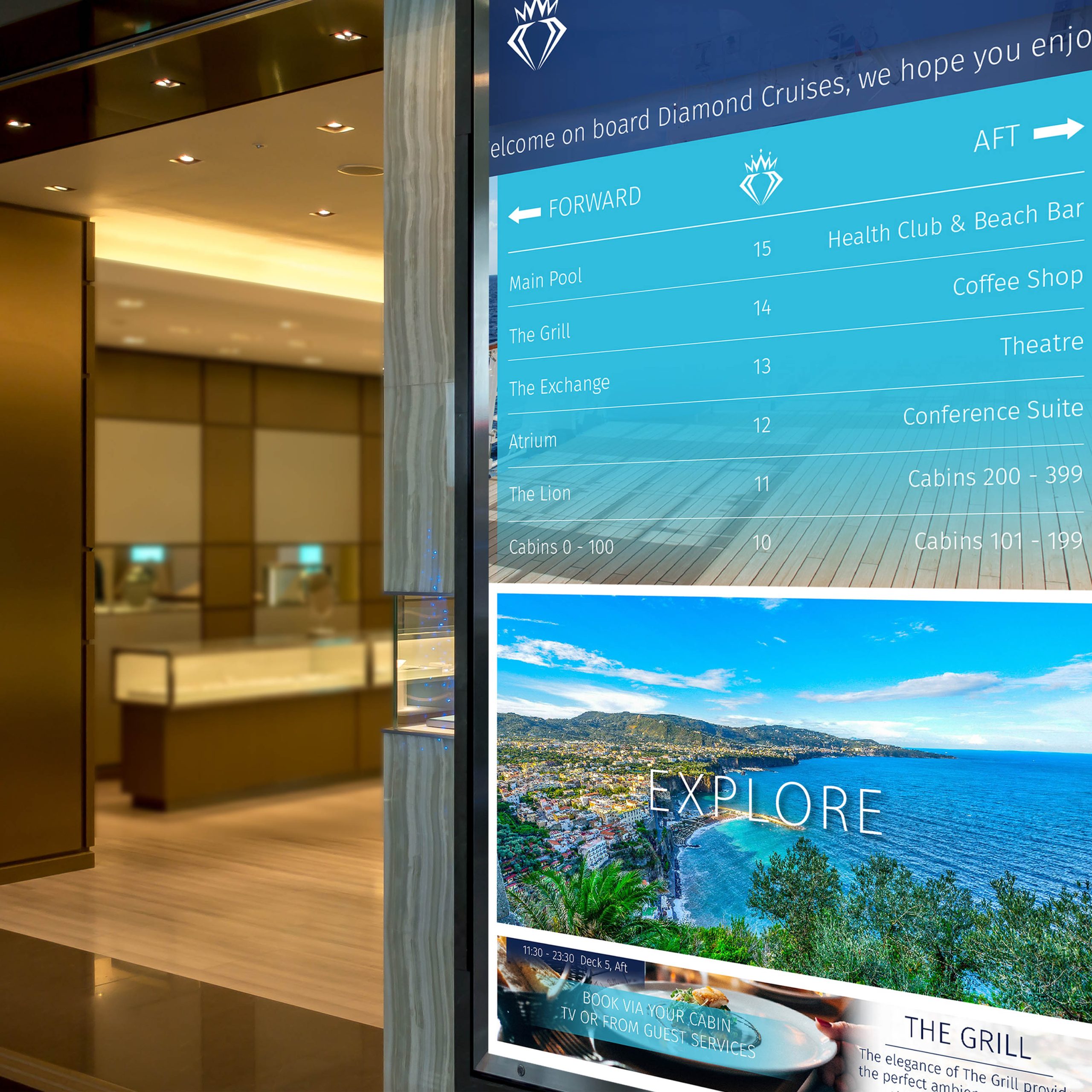
QSo how is VITEC supporting the video needs of new hotel construction — or property modernization?
Neville: At VITEC we are committed to all of the principles and functionality that I have shared over the course of this conversation. The IPTV solutions developed and deployed by our engineering and technology staff around the world have been designed to offer robust functionality, high security by adhering to open standards and systems that are highly secure and easy to deploy.
The video palette provided by VITEC, allows hoteliers to paint anything they want. We make every effort to advise our clients and provide easy-to-use, uncomplicated systems that are both scalable and flexible. We have created video solutions for hoteliers that can be cost-effectively deployed for properties large and small. For hotel chains, we even offer the ability to manage multiple properties from a central location, removing the need to have highly-skilled technical staff in every facility.
The IPTV solutions offered by VITEC enables the hospitality sector to enhance the stay experience and strengthen relationships while generating new revenue streams through the delivery of sophisticated value-added services that integrate the physical offerings of a property with the digital lives of their guests.
Hospitality & Leisure case study
Holiday Inn and Staybridge Suites Dubai Al-Maktoum Airport select VITEC to provide in-room entertainment and on-site information for a premium guest experience
Read more
Hospitality & Leisure case study
Grand Hyatt, Dubai: VITEC digital signage solution shows the way in luxury hotel and convention centre
Read more
Hospitality & Leisure case study
Alva Hotel, Hong Kong: Combining contemporary design, healthy living and smart technology
Read more

